
The BMW 003 is an early axial turbojet engine produced by BMW AG in Germany during World War II. The 003 and the Junkers Jumo 004 were the only German turbojet engines to reach production during World War II.

The Ishikawajima Ne-20 was Japan's first turbojet engine. It was developed during World War II in parallel with the nation's first military jet, the Nakajima Kikka.

The Mitsubishi T-2 was a supersonic jet trainer aircraft used by the Japan Air Self-Defense Force. Introduced in 1975, it was the first Japanese-designed aircraft to break the sound barrier. It was the basis of the Mitsubishi F-1 military aircraft. All T-2s were retired by 2006.
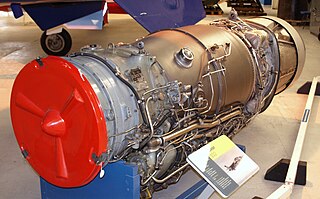
The Rolls-Royce Turbomeca Adour is a two-shaft low bypass turbofan aircraft engine developed by Rolls-Royce Turbomeca Limited, a joint venture between Rolls-Royce (UK) and Turbomeca (France). The engine is named after the Adour, a river in south western France.

The Pratt & Whitney J57 is an axial-flow turbojet engine developed by Pratt & Whitney in the early 1950s. The J57 was the first 10,000 lbf (45 kN) thrust class engine in the United States. The J57/JT3C was developed into the J75/JT4A turbojet, JT3D/TF33 turbofan, and PT5/T57 turboprop. The J57 and JT3C saw extensive use on fighter jets, jetliners, and bombers for many decades.
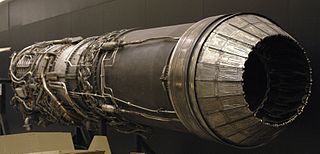
The General Electric J79 is an axial-flow turbojet engine built for use in a variety of fighter and bomber aircraft and a supersonic cruise missile. The J79 was produced by General Electric Aircraft Engines in the United States, and under license by several other companies worldwide.

The Pratt & Whitney J75 is an axial-flow turbojet engine first flown in 1955. A two-spool design in the 17,000 lbf (76 kN) thrust class, the J75 was essentially the bigger brother of the Pratt & Whitney J57 (JT3C). It was known in civilian service as the JT4A, and in a variety of stationary roles as the GG4 and FT4.

The General Electric/Allison J35 was originally developed by General Electric in parallel with the Whittle-based centrifugal-flow J33, and was the United States Air Force's first axial-flow compressor engine. The J35 was fairly simple, consisting of an eleven-stage axial-flow compressor and a single-stage turbine. With the afterburner, which most models carried, it produced a thrust of 7,400 lbf (32.92 kN).

The Fuji T-1 was Japan's first jet-powered trainer aircraft. The first flight was in January 1958. A total of 66 T-1 planes were built. It was retired in March 2006.
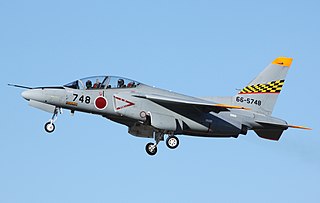
The Kawasaki T-4 is a Japanese subsonic intermediate jet trainer aircraft developed and manufactured by the commercial conglomerate Kawasaki Heavy Industries. Its sole operator is the Japan Air Self-Defense Force (JASDF), in part due to historic restrictions on the exporting of military hardware. In addition to its primary training mission, the T-4 has been used by the JASDF's Blue Impulse aerobatic team as well as liaison duties with most fighter units. The first XT-4 prototype flew on 29 July 1985, while the first production aircraft was delivered during September 1988.

The General Electric J85 is a small single-shaft turbojet engine. Military versions produce up to 2,950 lbf (13.1 kN) of thrust dry; afterburning variants can reach up to 5,000 lbf (22 kN). The engine, depending upon additional equipment and specific model, weighs from 300 to 500 pounds. It is one of GE's most successful and longest in service military jet engines, with the civilian versions having logged over 16.5 million hours of operation. The United States Air Force plans to continue using the J85 in aircraft through 2040. Civilian models, known as the CJ610, are similar but supplied without an afterburner, while the CF700 adds a rear-mounted fan for improved fuel economy.

The Armstrong Siddeley Viper is a British turbojet engine developed and produced by Armstrong Siddeley and then by its successor companies Bristol Siddeley and Rolls-Royce Limited. It entered service in 1953 and remained in use with the Royal Air Force, powering its Dominie T1 navigation training aircraft until January 2011.

The Bristol Siddeley Orpheus was a single-spool turbojet developed by Bristol Siddeley for various light fighter/trainer applications such as the Folland Gnat and the Fiat G.91. Later, the Orpheus formed the core of the first Bristol Pegasus vectored thrust turbofan used in the Harrier Jump Jet family.
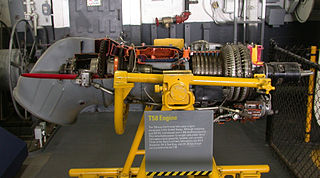
The General Electric T58 is an American turboshaft engine developed for helicopter use. First run in 1955, it remained in production until 1984, by which time some 6,300 units had been built. On July 1, 1959, it became the first turbine engine to gain FAA certification for civil helicopter use. The engine was license-built and further developed by de Havilland in the UK as the Gnome, in the West Germany by Klöckner-Humboldt-Deutz, and also manufactured by Alfa Romeo and the IHI Corporation.
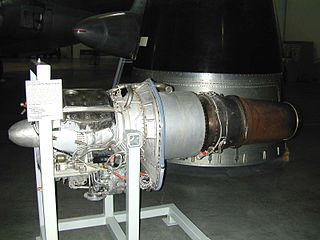
The Pratt & Whitney JT12, is a small turbojet engine. The Pratt & Whitney T73 is a related turboshaft engine.

The Kawasaki P-2J was a Maritime patrol and ASW aircraft developed for the Japan Maritime Self Defense Force. A turboprop-powered version of the radial-engined P-2 Neptune, the P-2J was developed as an alternative to buying the larger and more expensive P-3 Orion, which would eventually replace the P-2J in the 1980s.

The Fairchild J44 was a small turbojet developed in the 1940s by the Fairchild Engine Division.
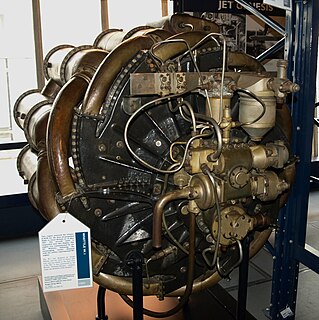
The Power Jets W.1 was a British turbojet engine designed by Frank Whittle and Power Jets. The W.1 was built under contract by British Thomson-Houston (BTH) in the early 1940s. It is notable for being the first British jet engine to fly, as the "Whittle Supercharger Type W1", powering the Gloster E.28/39 on its maiden flight at RAF Cranwell on 15 May 1941. The W.1 was superseded by the Power Jets W.2.

The Microturbo TRI 60 is a small, expendable turbojet engine developed for use in cruise missiles, target drones, and other small unmanned air vehicles. Variants of this engine produce from 3.5 - 5.3 kN of thrust. The engine first ran in 1974.

The Ishikawajima-Harima Heavy Industries (IHI) F3 is a low bypass turbofan engine developed in Japan by Ishikawajima-Harima Heavy Industries for the Kawasaki T-4 jet trainer aircraft. The first prototype engine, the XF3, was manufactured in 1981 and first flew in the XT-4 in July 1985. About 550 have been built.





















